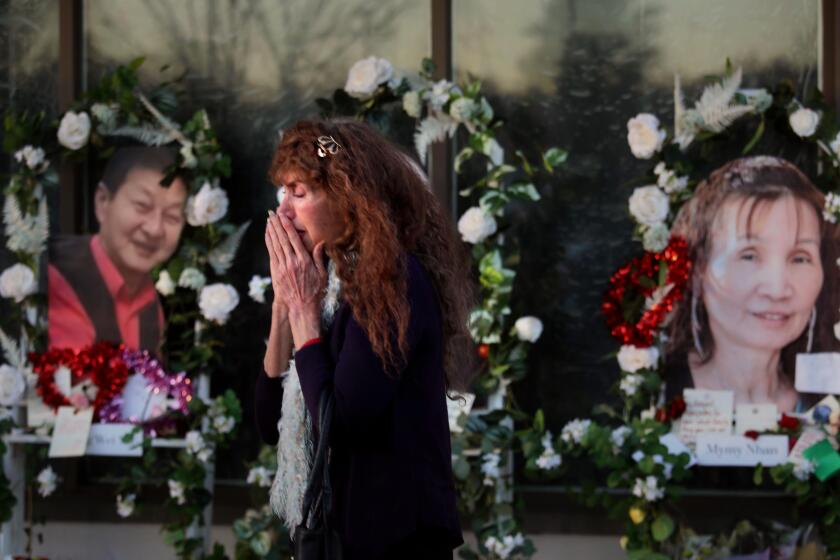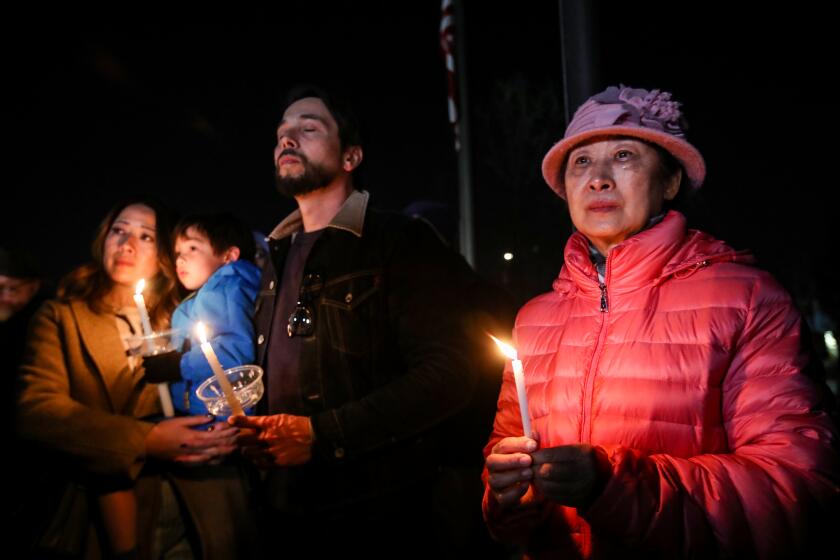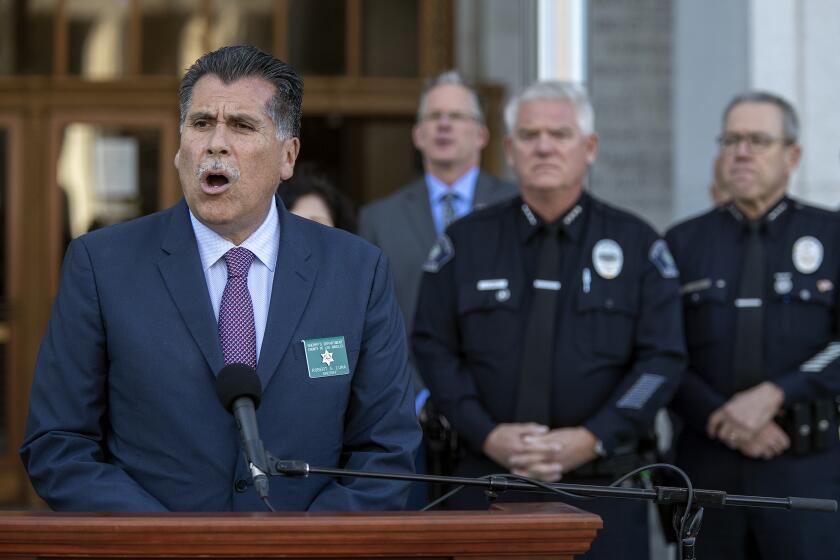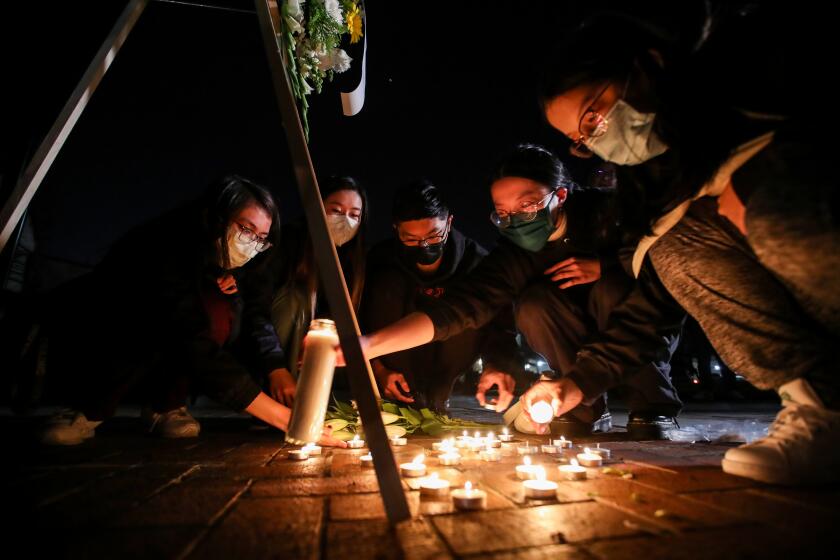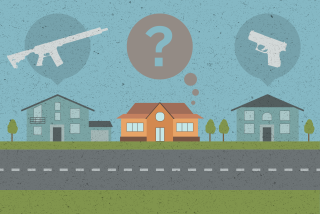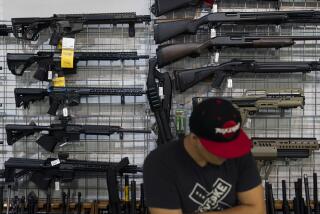Two mass shootings in three days. Are these copycat crimes?
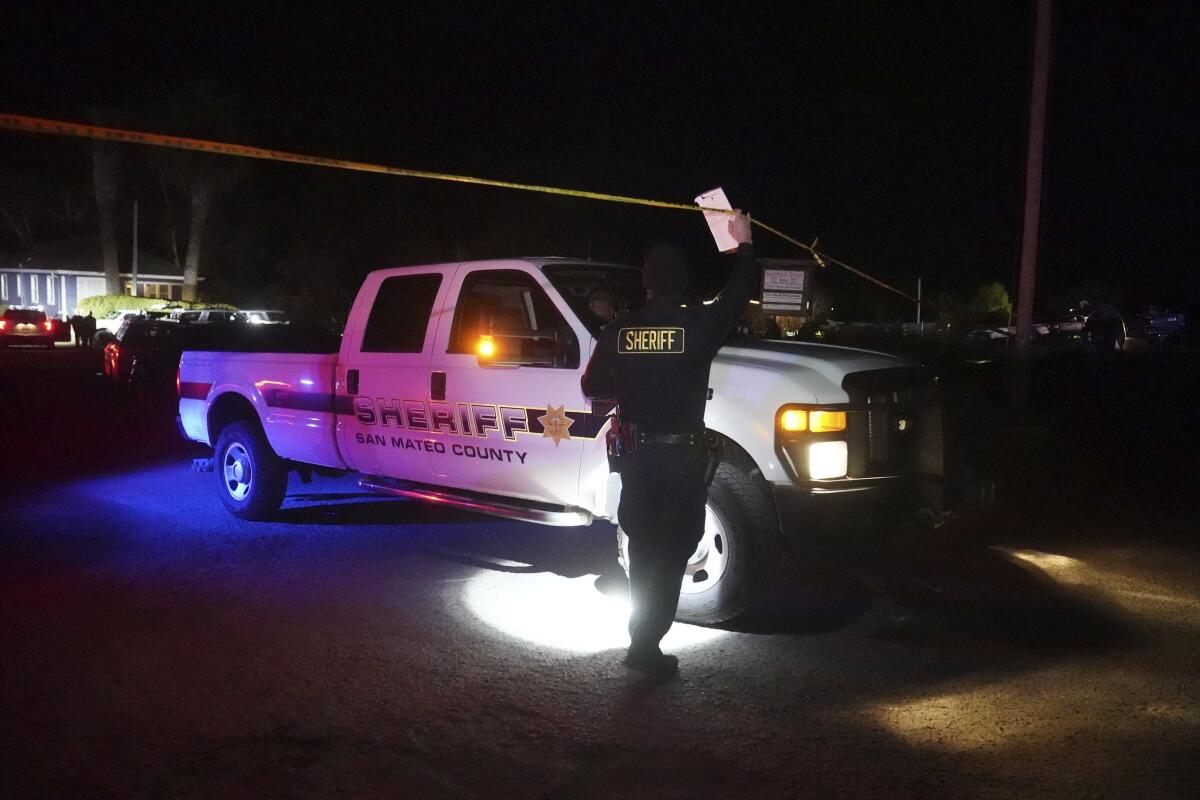
- Share via
Do a pair of back-to-back mass shootings in California suggest that older men will be the next generation of mass murderers?
Don’t count on it, experts say. The 72-year-old who killed 11 people in Monterey Park and the 66-year-old who’s alleged to have murdered seven near Half Moon Bay may have committed the crimes within 48 hours and 400 miles of each other. But they are likely to remain outliers in a mounting tally of younger perpetrators.
The reason: Although older men are quick to catch contagious diseases, they seem virtually immune to the kinds of contagion that prompt violent displays of mimicry.
“We don’t see many 60- and 70-year-olds committing mass homicides, and when they do it’s usually a murder-suicide within a family,” said Jack McDevitt, a criminologist at Northeastern University in Boston.
A gunman opened fire at a dance studio in Monterey Park, killing 11 people and wounding 9 more. Tens of thousands had gathered earlier nearby for a Lunar New Year festival.
Suicides tend to occur in clusters that suggest contagion, McDevitt said, but there is little evidence that murders or mass shootings follow such a pattern.
More important, he added, is one of criminology’s most established findings: When it comes to crime generally, and violent crime specifically, men tend to “age out” of criminal activity.
That pattern is seen with mass shootings as well.
A database maintained by Northeastern University’s Department of Criminology shows that, at 72 years old, the man who sprayed bullets into a ballroom dance studio Saturday night in Monterey Park, and died the next day of a self-inflicted gunshot wound, was the second-oldest perpetrator of a mass killing in recent years. The 66-year-old accused of gunning down seven people in San Mateo County on Monday afternoon would also rank among the oldest mass murderers.
That database goes back to 2006.
Three mass shootings have been carried out in one week in California, in Goshen, Monterey Park and Half Moon Bay.
That both men were Asian, and immigrants, puts them in even smaller company. Since 1967, a database of mass shooters maintained by the Violence Project has found that 11 of 172 perpetrators — about 6.4% — were of Asian descent. Nine of those mass shooters had immigrated to the United States from birthplaces in Asia.
All told, 15.1% of the Violence Project’s mass shooters were immigrants.
Although it is different in methodology and in the range of dates it covers, a database of mass murders maintained by Northeastern University, USA Today and the Associated Press tells a very similar story. It found that from 2006 until just before the two California shootings, 34 of 535 events — also 6.4% — were carried out by perpetrators identified as Asian or Pacific Islander.
But it is the ages of California’s two latest mass shooters that surprised researchers the most. Not since a 64-year-old video poker player fatally shot 58 attendees of a Las Vegas music festival in 2017 has an older person carried out a mass shooting in the U.S.
Violence in general, and mass murder in particular, is largely the province of younger and middle-aged men, said Emma Fridel, who teaches criminology at Florida State University and has contributed to the Northeastern database. Over recent decades, the average age of mass murderers — defined as those who kill four or more people in a single incident with any weapon — has been between 30 and 32, she said.
(They are also overwhelmingly male: In the Violence Project’s database of 172 mass shooters, all but four were men, and two of the four women acted in partnership with a man.)
“A key feature we see common among mass killers is this externalization of blame,” Fridel said. “They tend to be collectors of injustices.”
After Huu Can Tran, Chunli Zhao is the second Asian American man this week to be accused in a mass shooting of other Asian Americans in California.
Despite their highly visible role in school shootings, teens and young adults are not the most likely demographic to engage in mass murder; they’re generally too young to have accumulated enough grievances to move them to such violence, she said.
At the other end of the spectrum, older men tend to have “developed the coping skills to handle life’s frustrations,” she added.
Although they may harbor plenty of grievances, they seem to have safely reached old age precisely because they found less violent ways to manage their anger and disappointment.
“Mass shooters don’t make it to old age because they generally can’t cope for that long,” Fridel said.
If aggrievement offers a general motive for mass murder, a shooter’s choice of location may offer more specific clues as to the circumstances that set him off, experts say.
In this regard, experts including McDevitt consider the two men’s crimes to be somewhat distinct. The Monterey Park shooter’s choice of the Star Ballroom suggests that disappointing social relationships may have motivated his actions. The San Mateo County shooting appears to have targeted the suspect’s co-workers or employers, which could point to problems with money or work relationships.
Authorities are facing scrutiny over how long it took to notify the public that the gunman who killed 11 people was still at large.
“Having two tragedies back to back causes people to look for patterns, and they may not exist,” Fridel cautioned. “We are still talking about rare instances.”
The Violence Project’s database shows that 31% of mass shootings have happened at a workplace, and roughly 22% have occurred in a bar, restaurant or residence — venues that suggest a shooter might be motivated by failed relationships or interpersonal or group hatred.
Such distinctions, however, pale next to the single most-common factor that unites all mass shootings, said Dr. Amy Barnhorst, a UC Davis psychiatrist who studies gun violence.
“So many people struggle with entitlement, hatred, anger and disappointment,” Barnhorst said. “The thing that makes a mass shooting is the gun.”
Add a gun to the mix, and “all these different pathways that start in different places coalesce in a place where the rage and resentment results in gunfire rather than a punched-in wall or a bar fight,” she said.
Investigators continued to puzzle over what pushed Huu Can Tran to carry out a mass shooting at a Monterey Park dance studio, focusing on the possibility he was driven by jealousy.
Here, too, the demographics in the two California shootings appear to be consistent with some warning signs for potential violence, but conflict with others.
An internet survey conducted in 2018 by researchers at UC Davis and Harvard University estimated that 4.2 million adults in California owned a firearm. A disproportionate number of those firearm owners — 43% — were 60 years of age or older.
In light of that finding, it comes as little surprise that the two shooters may have owned guns. That said, gun ownership among Asian Americans appears to be more rare: in a state where Asians and Pacific Islanders account for roughly 16% of the population, the survey found that just 9% of gun owners identified their ethnicity as something other than white, Black or Latino.
The overwhelming majority of those gun owners “are very law-abiding, responsible gun-owners,” Barnhorst said. “It only takes one to give them a bad name.”
Or two.
- Share via
Watch L.A. Times Today at 7 p.m. on Spectrum News 1 on Channel 1 or live stream on the Spectrum News App. Palos Verdes Peninsula and Orange County viewers can watch on Cox Systems on channel 99.
